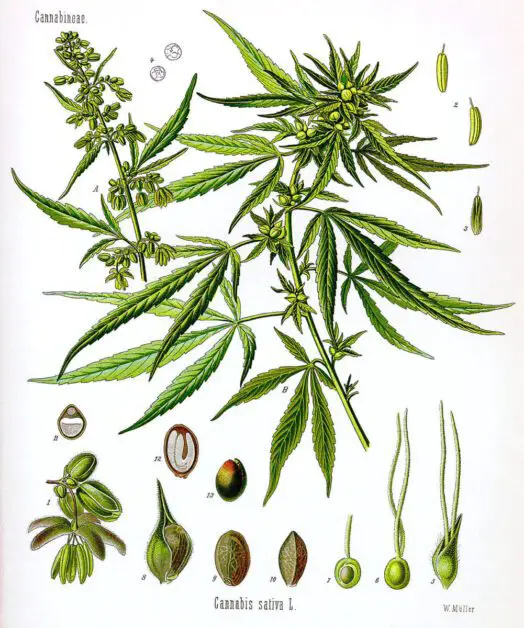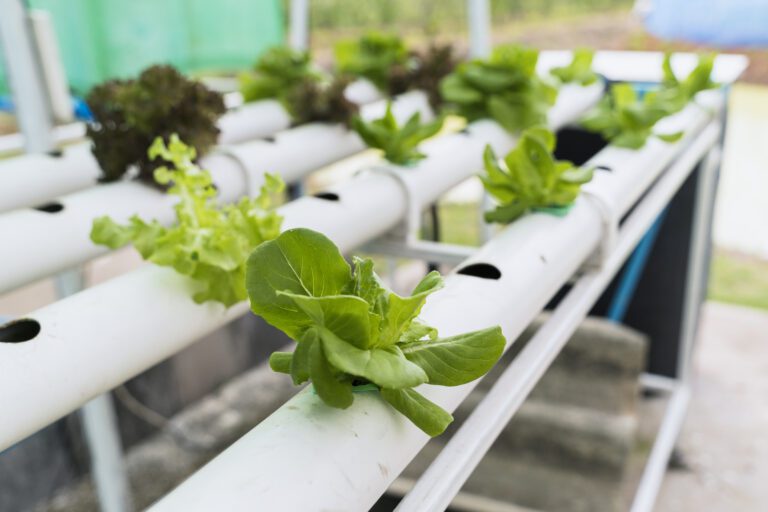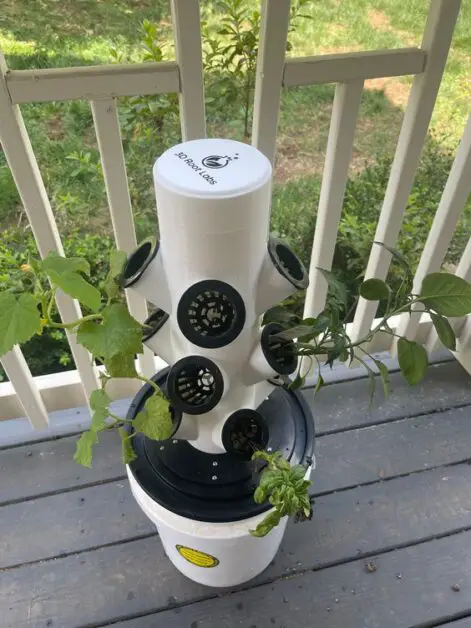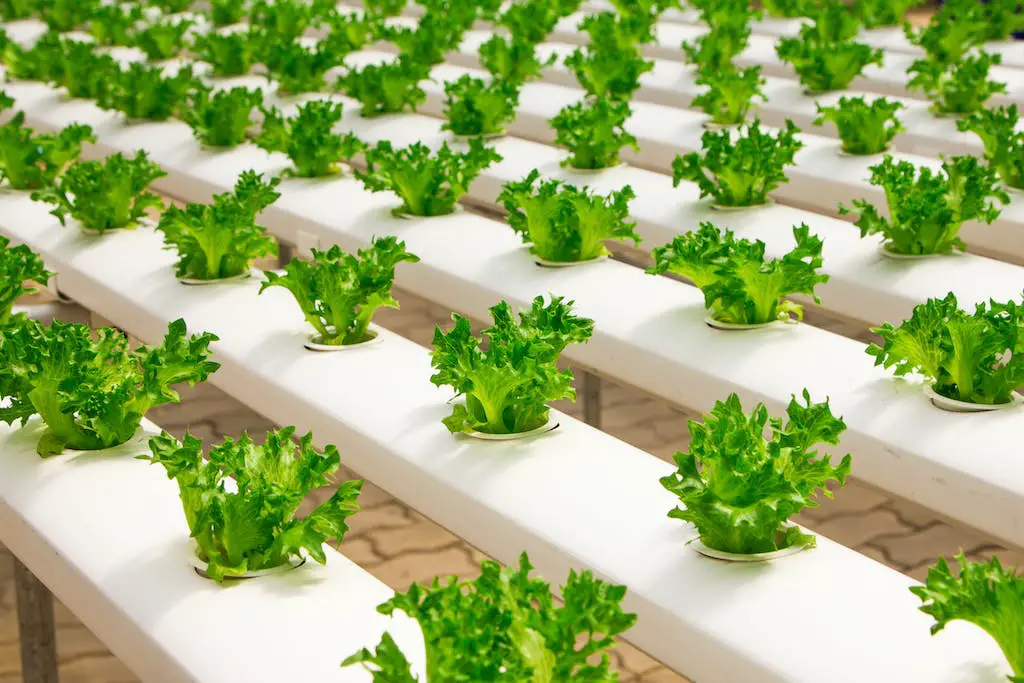How to Clean Salt Build Up in Hydroponics Systems: A Guide to Maintaining Your System and Avoiding Nutrient Lockout
Table of Contents
Understanding the Impact of Salt Build-Up in Hydroponics Systems
Salt build-up in hydroponics systems can have a significant impact on plant growth and overall system health. As nutrients are added to hydroponic solutions, the water is circulated and absorbed by plant roots, leaving behind a residue of salts. Over time, these salts can accumulate and lead to a range of issues.
One of the main problems caused by salt build-up is nutrient imbalance. As salts accumulate in the growing medium, they can disrupt the delicate balance of essential nutrients needed for plant growth. This can result in nutrient deficiencies or toxicities, leading to stunted growth, yellowing leaves, and poor overall plant health. Additionally, salt build-up can affect the pH levels of the solution, making it too acidic or alkaline, further impeding nutrient uptake.
Moreover, salt accumulation can also impact the physical properties of the growing medium. As salts accumulate, they can cause the medium to become compacted and less aerated, reducing the availability of oxygen to plant roots. This can hinder root development, leading to poor water and nutrient absorption and ultimately compromising plant health. Additionally, salt build-up can also contribute to the colonization of harmful pathogens, such as fungi and bacteria, further damaging plant roots and increasing the risk of diseases. So regular maintenance and cleaning are crucial to prevent salt build-up and ensure optimal performance of hydroponics systems.
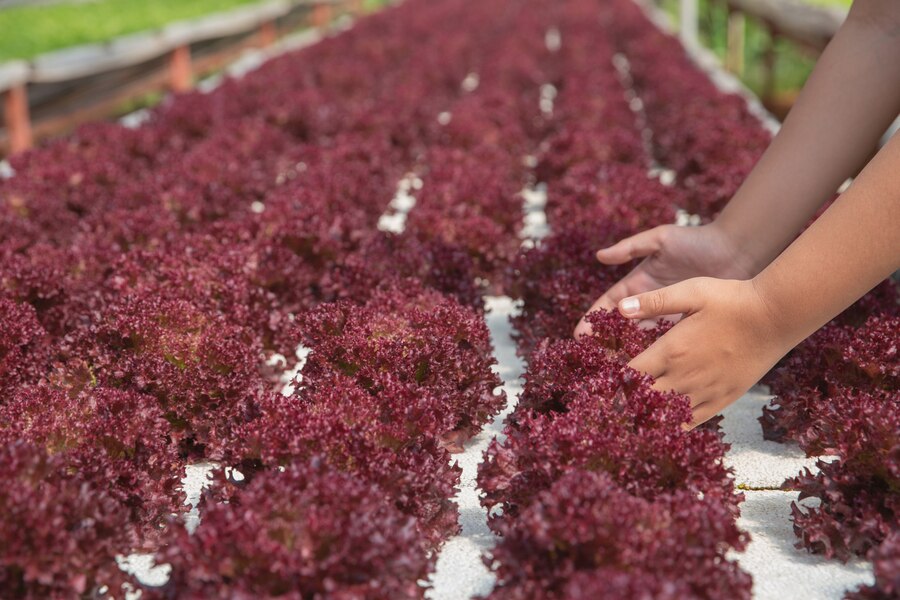
Identifying Signs of Salt Build-Up in Your Hydroponics System
Identifying signs of salt build-up in your hydroponics system is crucial for maintaining the health and productivity of your plants. As the nutrient solution is continuously circulated through the system, salts can accumulate over time, posing a threat to plant growth. By being aware of the indicators, you can take timely action to prevent further damage.
One sign of salt build-up is the appearance of white or crusty residue on the surface of your growing containers or equipment. This residue is caused by the precipitation of excess salts as the water evaporates. Additionally, if you notice a decrease in the growth rate or overall vigor of your plants, it may be a result of impaired nutrient uptake due to salt accumulation. Wilting, yellowing leaves, and stunted plant growth are also indicators of this issue. Regular monitoring of the electrical conductivity (EC) level of your nutrient solution is another useful method. An elevated EC level indicates high salt concentrations, which can hinder the plants’ ability to absorb water and essential nutrients, ultimately leading to plant stress or even death.

The Importance of Regular Maintenance to Prevent Salt Build-Up
Regular maintenance is crucial for preventing salt build-up in hydroponics systems. Without proper maintenance, salt levels can rise to dangerous levels, which can adversely affect plant health and growth. Regular maintenance ensures that any accumulated salts are flushed out of the system, maintaining a well-balanced nutrient solution and optimum plant performance.
One of the key aspects of regular maintenance is monitoring the electrical conductivity (EC) levels of the nutrient solution. EC is a measure of the salt concentration in the solution and can quickly indicate if salt build-up is occurring. By regularly measuring and adjusting the EC levels, gardeners can ensure that the nutrient solution remains within the desired range for plant growth. Furthermore, monitoring pH levels is also crucial, as high salt concentrations can alter the pH of the solution, leading to nutrient lockout and further detrimental effects on plant health.
In addition to monitoring nutrient levels, regular maintenance includes cleaning and flushing the hydroponics system components. Over time, organic residue, algae, and mineral deposits can accumulate on surfaces, particularly in reservoirs, pipes, and drip lines. These deposits can contribute to salt build-up and impede the proper flow of the nutrient solution. By regularly cleaning and flushing the system, gardeners can prevent the accumulation of salts and ensure the smooth operation of the hydroponics system.
Certainly! Here’s a table highlighting The Importance of Regular Maintenance to Prevent Salt Build-Up:
| Issue | Symptoms | Preventive Measures |
|---|---|---|
| Salt Build-Up | – White, chalky substance on the soil surface. – Excess salt in the plant and soil. | – Leach your plants every 4-6 months to prevent massive salt accumulation. – Use well-draining soil. – Avoid over-fertilization. – Monitor water quality and avoid using salty water for irrigation. |
Salt build-up can lead to dehydration, root rot, and stunted growth in plants. By staying proactive with regular maintenance, you can keep your indoor plants healthy and thriving!
Choosing the Right Cleaning Solution for Your Hydroponics System
When it comes to choosing the right cleaning solution for your hydroponics system, there are a few important factors to consider. First and foremost, it’s crucial to select a cleaning solution that is specifically designed for hydroponic systems. These solutions are formulated to effectively remove salt build-up without harming the delicate balance of nutrients in your system.
One popular option is a hydrogen peroxide-based cleaning solution. Hydrogen peroxide has been commonly used in hydroponics for its ability to break down organic matter and kill harmful bacteria and fungi. It is important to note that not all hydrogen peroxide solutions are suitable for hydroponic use, so be sure to choose a product that is labeled for this purpose. Another option is a citric acid-based cleaner, which can be effective in removing mineral deposits and salt build-up. Whichever cleaning solution you choose, be sure to follow the manufacturer’s instructions for proper usage and dilution to ensure optimal results.
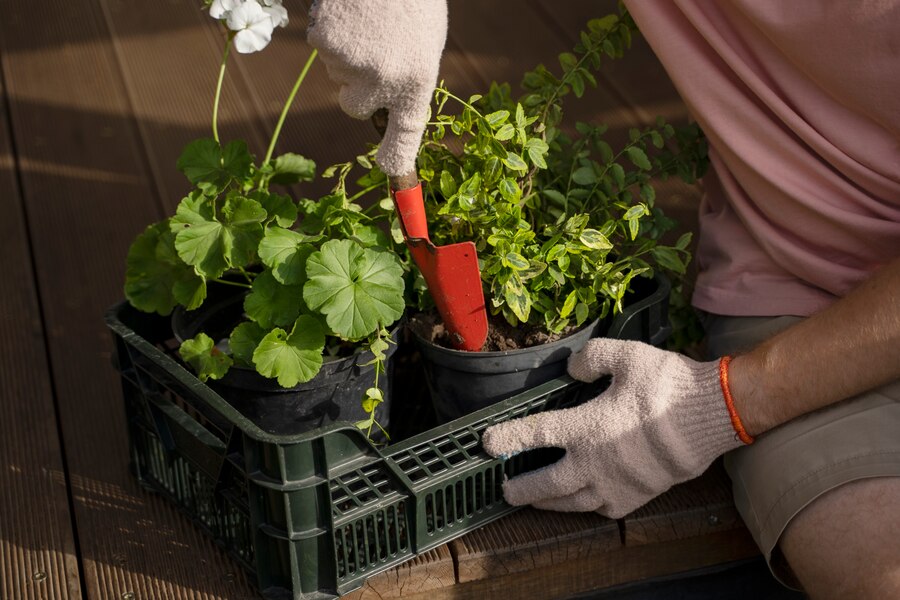
Step-by-Step Guide to Cleaning Salt Build-Up in Hydroponics Systems
Once salt build-up occurs in a hydroponics system, it is crucial to address the issue promptly to ensure the optimal growth and health of your plants. Cleaning the salt build-up involves a step-by-step process that should be followed carefully:
1. Begin by emptying the nutrient solution reservoir, removing any remaining plants or growing medium. It is important to discard the old solution, as it may contain excessive salts that have accumulated over time.
2. Thoroughly rinse the reservoir with warm water, ensuring that all debris and remnants of the old nutrient solution are removed. A gentle scrubbing with a non-abrasive brush can help dislodge any stubborn salt deposits.
3. Next, prepare a cleaning solution by mixing a mild detergent or commercial hydroponic system cleaner with warm water. Follow the manufacturer’s instructions for the appropriate dilution ratio. This cleaning solution will help break down the salt build-up and remove any residue from the system.
4. Pour the cleaning solution into the reservoir and let it sit for the recommended period specified by the cleaner’s instructions. This will allow the solution to penetrate and dissolve the salt deposits effectively.
5. After the designated period, thoroughly rinse the reservoir with clean water to remove the cleaning solution and any loosened salt residues. Rinse multiple times to ensure all traces of the cleaning solution are eliminated.
6. Inspect all other components of the hydroponics system, such as pumps, filters, and tubing, for any signs of salt build-up. If present, detach these components and clean them individually using the same cleaning solution and rinsing process.
Remember, regular cleaning and maintenance are essential in preventing salt build-up in hydroponics systems. By following these step-by-step instructions, you can ensure that your system remains free from excessive salts and provide an optimal environment for your plants to thrive.
Here’s a step-by-step guide on how to clean salt build-up in hydroponics systems:
| Step | Action |
|---|---|
| 1 | Water Removal: Remove as much water as possible from the reservoir before cleaning it out. This ensures that you don’t dilute your cleaning solution. |
| 2 | Prepare a Salt Solution: Fill a large bucket or tub with water and add 1 cup of table salt. Stir the solution well. |
| 3 | Cleanse Your System: Use the salt solution to scrub away salt deposits on the walls of your reservoir, drip emitters, and lines. Rinse thoroughly with clean water to remove any residue. Repeat if necessary until all salt buildup is removed. |
Remember, keeping your hydroponic system clean is crucial for optimal plant health and nutrient delivery!
Removing Salt Deposits from Hydroponics System Components
When it comes to maintaining a hydroponics system, one of the key tasks is removing salt deposits from the components. Over time, as the nutrient solution circulates through the system, salts can accumulate on various surfaces, impeding the overall functioning of the system. This can lead to reduced nutrient uptake by the plants and ultimately impact their growth and productivity. Therefore, it is essential to regularly clean and remove these salt deposits to ensure optimal system performance.
To begin the process of removing salt deposits, it is important to first dismantle the system and carefully inspect each component. Check for any visible build-up on surfaces such as tubing, reservoirs, pumps, and even the grow medium itself. Using a soft brush or cloth, gently scrub away the salt deposits, being cautious not to damage the components. For hard-to-reach areas, such as small crevices or intricate parts, a toothbrush can be particularly effective. In some cases, soaking the affected components in a diluted cleaning solution may also help loosen stubborn salt deposits, making them easier to remove. Once all the components have been thoroughly cleaned, rinse them with fresh water to remove any residue or cleaning solution. By regularly removing salt deposits from the hydroponics system components, you can ensure that the nutrient solution flows freely and unimpeded, promoting optimal plant growth and health.
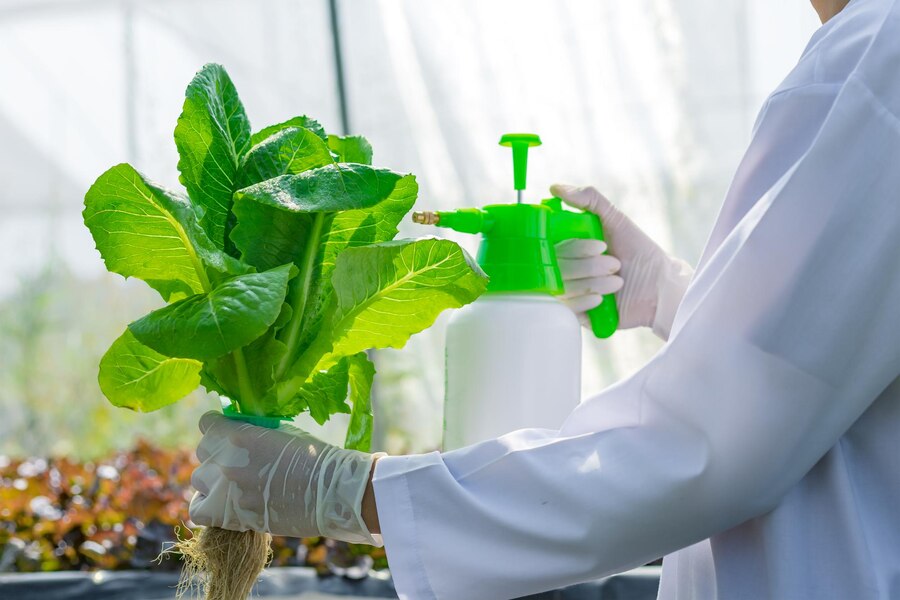
Properly Flushing Your System to Remove Excess Salts
Properly flushing your hydroponics system on a regular basis is essential for maintaining a healthy and productive garden. Excess salts can accumulate in the system over time, leading to nutrient imbalances and plant stress. By flushing the system, you can effectively remove these salts and prevent potential issues.
To begin the flushing process, start by draining all the nutrient solution from the reservoir. This can be done by using a pump or simply by emptying the solution manually. Once the reservoir is empty, fill it up with fresh, clean water. It is important to use water that is free from any contaminants or impurities, as these can further contribute to salts build-up in the system.
Next, you will need to circulate the fresh water through the entire system, including all the pipes, tubes, and grow trays. This can be achieved by turning on the pump and allowing the water to flow through the system for a period of time, usually around 15-30 minutes. This will help to dislodge and flush out any remaining salts that may be clinging to the surfaces.
After the initial flush, it is recommended to repeat the process at least one more time to ensure thorough cleaning. This will help to eliminate any residual salts that may have been missed during the first flush. Once the system has been properly flushed, you can then refill the reservoir with fresh nutrient solution, ensuring that all nutrient levels are properly balanced.
By regularly flushing your hydroponics system to remove excess salts, you can maintain optimal nutrient levels and prevent the accumulation of harmful substances. This will promote healthy plant growth and maximize yields in your hydroponic garden. Remember to follow the manufacturer’s guidelines and recommendations for your specific hydroponics system when performing flushing procedures.
Maintaining a Balanced Nutrient Solution to Prevent Salt Build-Up
Maintaining a balanced nutrient solution is crucial for preventing salt build-up in your hydroponics system. Excess salts can accumulate over time, leading to nutrient imbalances and plant stress. To ensure a stable and healthy nutrient solution, there are several key factors to consider.
Firstly, it is important to regularly monitor and adjust the pH level of your nutrient solution. The ideal pH range for most hydroponic crops is between 5.5 and 6.5. A pH level that is too high or too low can impede nutrient uptake and trigger nutrient lockout, exacerbating salt build-up. Regularly testing and adjusting the pH level will help maintain a favorable environment for nutrient absorption and prevent salt accumulation.
In addition to pH, monitoring and controlling the concentration of nutrients in your solution is vital. Over time, if nutrient levels become too high, it can lead to excessive salt build-up. Conversely, if nutrient levels are too low, plants may not receive sufficient nutrition, leading to nutrient deficiencies. Regularly measuring and adjusting the nutrient concentration based on the specific requirements of your plants will help maintain an optimal balance and prevent salt accumulation.
By maintaining a balanced nutrient solution through regular monitoring and adjustments of pH and nutrient concentrations, you can effectively prevent salt build-up in your hydroponics system. This proactive approach will not only ensure the health and wellbeing of your plants but also optimize their growth and yield potential.
Monitoring pH Levels to Avoid Nutrient Lockout in Hydroponics Systems
Maintaining the proper pH levels in your hydroponics system is crucial to preventing nutrient lockout, which can have detrimental effects on plant growth and overall system health. Nutrient lockout occurs when the pH level is too high (alkaline) or too low (acidic), causing the nutrients to become unavailable to the plants. It is essential to regularly monitor and adjust the pH levels to ensure optimal nutrient uptake and avoid any potential nutrient deficiencies.
To effectively monitor pH levels, you will need to invest in a reliable pH meter or test kit specifically designed for hydroponics. These tools will provide accurate readings and help you identify any fluctuations that may occur. It is recommended to check the pH levels at least once a day or more frequently if your system is prone to rapid pH changes.
When adjusting pH levels, it’s important to note that different plant species prefer specific pH ranges. Generally, the ideal pH range for most hydroponic plants is between 5.5 and 6.5. However, certain crops may have slightly different requirements, so it’s essential to research and understand the specific pH preferences of your chosen plants. By regularly monitoring and maintaining optimal pH levels, you can ensure a healthy and thriving hydroponic system, setting the stage for bountiful harvests of nutrient-rich produce.
Adjusting Nutrient Concentrations to Prevent Salt Accumulation
Adjusting nutrient concentrations is a crucial aspect of preventing salt accumulation in hydroponics systems. When nutrient concentrations are too high, the excess salts can build up over time, leading to detrimental effects on plant health and growth. By carefully monitoring and adjusting the nutrient levels, you can ensure a balanced and optimal growing environment for your plants.
One of the first steps in adjusting nutrient concentrations is to regularly test the nutrient solution for its electrical conductivity (EC) or total dissolved solids (TDS). These measurements indicate the level of salts present in the solution. Ideally, the EC or TDS should be within a specific range suitable for the specific plant species being cultivated.
If the EC or TDS levels are too high, it is necessary to reduce the nutrient concentrations in the solution. This can be achieved by diluting the nutrient solution with water or by replacing a portion of the solution with a fresh, low-concentration batch. It is important to make small adjustments gradually, allowing the plants to adapt to the changes without experiencing stress.
Moreover, adjusting nutrient concentrations also involves considering the specific nutrient requirements of the plants at various stages of growth. For example, young seedlings may require lower nutrient levels compared to mature plants. By following a well-designed nutrient management plan, which takes into account the specific needs of each plant species, you can maintain optimal nutrient concentrations and prevent salt accumulation in your hydroponics system.
Implementing Preventative Measures to Minimize Salt Build-Up
To minimize salt build-up in your hydroponics system, it is important to implement preventative measures. One key step is to regularly monitor and maintain the pH levels of your nutrient solution. High pH levels can lead to the accumulation of salts, so it is crucial to keep the pH within the optimal range for nutrient uptake by your plants. Invest in a reliable pH meter and use it regularly to check and adjust the pH as needed.
In addition to pH monitoring, another preventative measure is to properly flush your hydroponics system. Flushing involves periodically draining and replacing the nutrient solution with fresh water. This helps to remove any excess salts that may have built up over time. It is recommended to flush your system at least once a month, or more frequently if you notice signs of salt build-up. Flushing not only helps to prevent salt accumulation but also improves the overall health and vigor of your plants by maintaining a clean and balanced environment.
• Regularly monitor and maintain the pH levels of your nutrient solution
• Invest in a reliable pH meter and use it regularly to check and adjust the pH as needed
• Keep the pH within the optimal range for nutrient uptake by your plants
• Properly flush your hydroponics system periodically to remove excess salts
• Drain and replace the nutrient solution with fresh water at least once a month, or more frequently if salt build-up is noticed
• Flushing helps prevent salt accumulation and improves plant health and vigor
• Maintaining a clean and balanced environment is essential for overall plant health
Troubleshooting Common Issues Related to Salt Build-Up in Hydroponics Systems
Salt build-up is a common issue that hydroponic gardeners may encounter in their systems. It can lead to various problems such as nutrient lockout, decreased plant growth, and root damage. When troubleshooting salt build-up, it’s important to understand the root causes and take appropriate measures to address the issue.
One common cause of salt build-up is the excessive use of fertilizers or nutrient solutions. Over time, unused salts from these solutions can accumulate in the growing medium, affecting the nutrient balance and impeding the uptake of essential elements by the plants. To tackle this issue, gardeners should carefully follow the recommended dosage of nutrients and adjust the concentration based on the plant’s growth stage. Regular monitoring of electrical conductivity (EC) levels can also help in detecting any salt build-up early on, allowing for timely corrective actions.
Another factor that contributes to salt accumulation is improper flushing of the system. Flushing is crucial for removing excess salts and maintaining a balanced nutrient solution. Insufficient flushing can lead to a buildup of salts in the root zone, inhibiting nutrient absorption and causing stressed plants. Gardeners should ensure thorough flushing of their hydroponics system at regular intervals, replacing the nutrient solution with fresh, clean water to displace any accumulated salts. Additionally, incorporating periodic deep cleaning of system components can help prevent salt build-up and ensure the longevity of the system’s performance.
To effectively troubleshoot and mitigate salt build-up in hydroponics systems, gardeners need to identify the root causes, implement regular maintenance practices, and monitor the nutrient balance. By addressing these common issues, gardeners can maintain a healthy and thriving hydroponic garden.
Best Practices for Long-Term Maintenance of Hydroponics Systems to Prevent Salt Build-Up.
To ensure long-term maintenance of your hydroponics system and prevent salt build-up, there are several best practices you should follow. Firstly, regular monitoring of water quality is essential. Test the pH and electrical conductivity (EC) levels of your nutrient solution at least once a week to identify any potential imbalances or excessive salt accumulation. This will help you make necessary adjustments and prevent nutrient lockout.
Another important practice is to clean and sanitize your hydroponics system regularly. Salt build-up can occur on various components, such as reservoirs, pumps, tubing, and grow trays. Clean these items thoroughly using a suitable cleaning solution and follow the manufacturer’s instructions. By removing salt deposits and other contaminants, you can optimize the performance of your system and ensure a healthy growing environment for your plants.
In addition, maintaining a balanced nutrient solution is crucial in preventing salt accumulation. Excessive amounts of fertilizer can lead to high salt levels in your hydroponics system. Follow the recommended feeding schedule and avoid overfeeding your plants. Regularly monitor the nutrient concentrations and adjust them as needed to maintain a proper balance. Proper nutrient management will not only prevent salt build-up but also promote healthier growth and higher yields in your hydroponic garden.
Please do watch video to know more details.
What is salt build-up in hydroponics systems?
Salt build-up in hydroponics systems refers to the accumulation of excess salts, particularly mineral salts, in the growing medium or nutrient solution. This can occur when the water used in the system contains high levels of dissolved minerals, or when the nutrient solution is not properly balanced or regularly flushed.
How does salt build-up impact hydroponics systems?
Salt build-up can have detrimental effects on hydroponics systems. It can disrupt the balance of nutrients in the solution, leading to nutrient imbalances and deficiencies in plants. Additionally, salt build-up can affect the pH levels of the nutrient solution, potentially causing nutrient lockout and hindering plant growth.
What are the signs of salt build-up in a hydroponics system?
Some common signs of salt build-up in a hydroponics system include yellowing or browning of leaves, stunted growth, reduced plant vigor, and a white crust or residue on the surface of the growing medium or system components. These signs may indicate that it’s time to clean and flush the system to remove excess salts.
How often should I clean my hydroponics system to prevent salt build-up?
Regular maintenance is crucial to prevent salt build-up in hydroponics systems. It is recommended to clean and flush the system every 2 to 4 weeks, depending on the specific needs of your plants and the quality of your water source. Monitoring the signs of salt build-up will help determine the frequency of cleaning.
What cleaning solution should I use to remove salt build-up in my hydroponics system?
When cleaning a hydroponics system to remove salt build-up, it is important to use a mild and non-toxic cleaning solution. A mixture of water and vinegar or hydrogen peroxide can be effective in removing salt deposits without harming the plants or beneficial microorganisms in the system.
How do I properly flush my hydroponics system to remove excess salts?
Flushing your hydroponics system involves running a large volume of clean water through the system to flush out excess salts. This can be done by disconnecting the nutrient solution reservoir and allowing water to flow through the system for an extended period. Flushing should be done until the runoff water measures close to the same conductivity as the input water.
What is nutrient lockout in hydroponics systems?
Nutrient lockout refers to a condition in which plants are unable to absorb certain nutrients in the presence of imbalanced pH levels or excess salts. It can occur when the pH of the nutrient solution is too high or too low, preventing the uptake of essential minerals by the plants. Monitoring and adjusting pH levels can help prevent nutrient lockout.
How can I maintain a balanced nutrient solution to prevent salt build-up?
To maintain a balanced nutrient solution and prevent salt build-up, it is important to regularly monitor and adjust the nutrient concentrations according to the specific needs of your plants. Conductivity and pH meters can be used to ensure the nutrient solution is within the optimal range and to make necessary adjustments.
What preventative measures can I implement to minimize salt build-up in my hydroponics system?
Some preventative measures to minimize salt build-up in hydroponics systems include using high-quality water sources with low mineral content, regularly monitoring and adjusting nutrient concentrations and pH levels, avoiding over-fertilization, and implementing regular cleaning and flushing routines.
What are some common issues related to salt build-up in hydroponics systems?
Some common issues related to salt build-up in hydroponics systems include nutrient deficiencies, nutrient lockout, pH imbalances, reduced plant growth and vigor, and increased susceptibility to pests and diseases. Regular maintenance and proper monitoring can help prevent and address these issues.

Nicole Burke is a dynamic writer at SouthElMonteHydroponics, fueled by her passion for horticulture and environmental sustainability. Armed with a degree in Environmental Science from a renowned institution, Nicole’s expertise lies in hydroponic gardening, organic farming, and biodiversity conservation. Her insatiable curiosity and love for nature drive her to explore innovative techniques in hydroponics, seeking to revolutionize the way we grow crops in urban environments. Nicole’s writing reflects her deep commitment to promoting eco-conscious practices and fostering a deeper connection between humans and the natural world. Through her engaging storytelling, she inspires others to embrace sustainable living and harness the power of hydroponics for a greener future.

